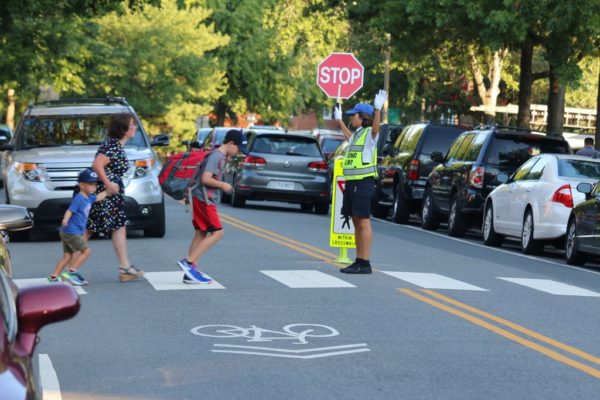
The speed limit is being lowered in some local roads.
The Arlington County Board voted 5-0 on Saturday to approve the establishment of “School Slow Zones,” with 20 mph speed limits. Implementation, around 13 public and private schools, is expected to be complete this later winter or in the spring.
County staff will evaluate the effectiveness of the initial slow zones before moving forward with potentially implementing the lower speed limits around all Arlington schools.
More from an Arlington County press release:
Today, the Arlington County Board voted 5 to 0 to approve the creation of “School Slow Zones,” which aims to reduce traffic speeds around 13 schools across the County. The zones address a key action item in the Vision Zero Action Plan, adopted by the Board in May, and are the first application of permanent 20-mile-per-hour speed limits permitted under Virginia law.
Schools are a key focus area for Vision Zero in Arlington – a nationally recognized strategy to eliminate all fatalities and severe injuries no matter the means of travel, while increasing safety and mobility. Some specific data points:
- One in four crashes in Arlington involves speeding.
- Every year, there are 10+ crashes involving speeding around schools in Arlington.
- The risk of injuries and deaths increases as vehicle speeds increase.
- Children are among the most vulnerable travelers.
The School Slow Zones are the result of an interdepartmental partnership between the Arlington Department of Environmental Services’ Transportation Division, Arlington Public Schools (APS) and the Arlington County Police Department.
“The recent tragic traffic fatalities in our community remind us how important it is to achieve our Vision Zero goal of eliminating serious traffic injuries and deaths,” said Arlington County Board Chair Matt de Ferranti. “These zones are one of many steps the County is taking to help road users reduce speed and increase awareness of people – usually children — walking and biking near our schools.”
What are School Slow Zones?
A School Slow Zone is a permanent 20 mile-per-hour speed limit on a neighborhood street within 600 feet of an access point to a school. Speed limit signs and pavement markings clearly define the zone.
Where will the First Slow Zones Be Located?
This demonstration project approved by the Board will install 11 School Slow Zones around 13 public and private schools in the County (two zones both include pairs of schools very near to each other), to test the effectiveness of the treatments developed by transportation staff. County and APS staff identified schools for the demonstration project from three different sources:
- Through Vision Zero
- Hoffman-Boston Elementary School
- Gunston Middle School
- Drew Elementary School
- In coordination with APS
- Escuela Key Elementary School (formerly Arlington Traditional School)
- Arlington Traditional School (formerly McKinley Elementary School)
- Innovation ES (formerly Key Elementary School
- Cardinal ES (new school)
- Because existing safety beacons suitable for a School Slow Zone need immediate replacement
- Tuckahoe Elementary and nearby Bishop O’Connell High School
- Glebe Elementary School
- Wakefield High School and nearby Claremont Elementary School
- St. Thomas More Cathedral School
Implementing School Slow Zones
Implementation of the first Slow Zones is expected to take between three and five months.
During the demonstration stage, transportation staff will collect “before” and “after” vehicle speed data to assess whether zones, as designed, successfully reduce speeds around schools. Transportation staff will also collect public feedback before considering adjustments to zone infrastructure and placement for all remaining schools in Arlington.
Moving forward, the County anticipates adding ten Slow Zones each year, meaning that the 40-plus public and private schools in the County could be updated within the next three to five years.

